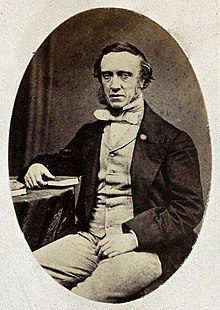
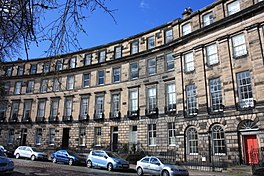

James Spence FRSE FRCSEd (1812-1882) was a Scottish surgeon. [1] He served as President of the Royal College of Surgeons of Edinburgh 1867/68.



James Spence FRSE FRCSEd (1812-1882) was a Scottish surgeon. [1] He served as President of the Royal College of Surgeons of Edinburgh 1867/68.
He was born on 31 March 1812 at 12 South Bridge in Edinburgh, the son of James Spence, a perfumer, and his third wife. [2]
He was educated at a boarding-school in Galashiels and afterwards at the Royal High School, Edinburgh. He studied medicine at the University of Edinburgh, but left to be apprenticed to Messrs. Scott & Orr, a firm of Edinburgh chemists, at 100 South Bridge. [3] He managed, however, to complete his medical education in the Edinburgh Extramural School of Medicine and in 1832 received the diploma of Licentiate of the Royal College of Surgeons of Edinburgh. [1]
On qualifying he made two voyages to Calcutta in 1833 as surgeon to an East Indiaman, but returned to Edinburgh to teach anatomy for 7 years as the university demonstrator under Professor Alexander Monro tertius. He then joined the extramural school of anatomy to act as demonstrator where he took part in the lecture-room course of demonstrations on regional anatomy, as well as in the dissecting-room teaching. [1]
He left the dissecting-room in 1846 to give lectures on surgery. In 1849, on becoming a Fellow of the Royal College of Surgeons, he lectured systematically on surgery, first at number one Surgeons' Square and then at the Extramural School of Medicine at Surgeons' Hall. He became assistant surgeon at Edinburgh Royal Infirmary in 1850, full surgeon in 1854 and clinical lecturer in 1856. As professor of surgery, he was surgeon at the Infirmary until his death. [1] In 1869 Byrom Bramwell served under Spence as his house surgeon at the Infirmary. [4]
In 1852 Spence was elected a member of the Harveian Society of Edinburgh and served as President in 1871. [5]
In 1864, he was given the chair of systematic surgery as Professor of Surgical Science at Edinburgh University [6] in place of Prof James Miller In 1865 he was appointed Surgeon in Ordinary to Queen Victoria in Scotland and in 1867 was elected President of the Royal College of Surgeons of Edinburgh for 2 years. He was elected a Fellow of the Royal Society of Edinburgh in 1866 his proposer being Sir David Brewster. [7]
He died at home, 21 Ainslie Place on the Moray Estate in western Edinburgh on 6 June 1882. [8] He was buried in the Grange Cemetery, Edinburgh. The graves lies in the main south-west section facing onto the south path. His wife and children lie with him.
He published Lectures on Surgery in 1871. [1]
In 1847 married Margaret Fair (1825-1905), the daughter of Thomas Fair of Buenos Aires, joint founder of St John's Anglican Church in that city, [9] with whom he had six sons and three daughters.
These included John George Spence (1854-1870), Helen Mary Spence (died an infant), Margaret Sarah Spence (d.1927), Thomas Fair Hetherington Spence, a physician (1851-1928), James Edward Kendall Spence (died at sea 1893), and Hamilton Robert Spence (d.1936). [10]
The Tail of Spence, an extension of the tissue of the breast that extends into the axilla, is named after him. [11]
He was photographed by Hill & Adamson around 1850. [12]

James Syme was a Scottish pioneering surgeon.

James Bell Pettigrew was a Scottish anatomist and noted naturalist, aviation pioneer and museum curator. He was a distinguished naturalist in Britain, and Professor of Anatomy at St Andrews University from 1875 until his death.

William Sharpey FRS FRSE LLD was a Scottish anatomist and physiologist. Sharpey became the outstanding exponent of experimental biology and is described as the "father of British physiology".

Sir Andrew Douglas MaclaganPRSE FRCPE FRCSE FCS FRSSA was a Scottish surgeon, toxicologist and scholar of medical jurisprudence. He served as president of 5 learned societies: the Royal Medical Society (1832), the Royal College of Surgeons of Edinburgh (1859–61), the Royal College of Physicians of Edinburgh (1884–87), the Royal Society of Edinburgh (1890–5), and the Royal Scottish Society of Arts (1900).

Sir Harold Jalland Stiles was an English surgeon who was known for his research into cancer and tuberculosis and for treatment of nerve injuries.
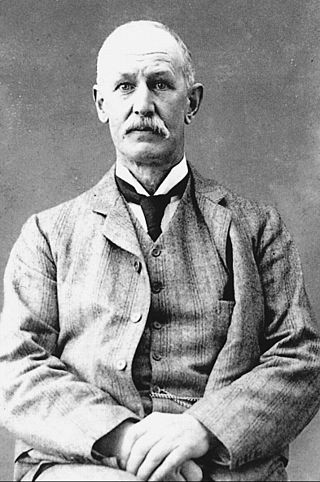
Daniel John Cunningham, was a Scottish physician, zoologist, and anatomist, famous for Cunningham's Text-book of Anatomy and Cunningham's Manual of Practical Anatomy.
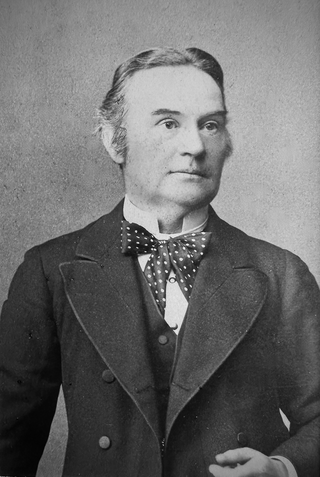
Thomas Annandale, FRCS FRSE (1838–1907) was a Scottish surgeon who conducted the first repair of the meniscus and the first successful removal of an acoustic neuroma, and introduced the pre-peritoneal approach to inguinal hernia repair. He served as Regius Professor of Clinical Surgery at the University of Edinburgh. His collection of anatomical specimens was donated to the Surgeon's Hall in Edinburgh and is now known as the Thomas Annandale Collection.

Sir Patrick Heron Watson was an eminent 19th-century Scottish surgeon and pioneer of anaesthetic development. He was associated with a number of surgical innovations including excision of the knee joint, excision of the thyroid and excision of the larynx for malignant disease. He was President of the Royal College of Surgeons of Edinburgh on two occasions, an unusual honour, and was the first President of the Edinburgh Dental Hospital. He was a great advocate of women training in medicine and surgery and did much to advance that cause.

Sir Byrom BramwellFRSEFRCPE was a British physician and medical author. He was a general physician, but became known for his work in neurology, diseases of the heart and blood, and disorders of the endocrine organs. He was president of the Royal College of Physicians of Edinburgh.

James Miller FRCSEd, FRSE was a surgeon and medical author in Edinburgh. He was author of the important 19th century textbook, Principles of Surgery. Like his father he became a member of the Free Church of Scotland in 1843 and was a firm believer in temperance.

John Chiene, CB, FRSE, FRCSEd was a Scottish surgeon, who was Professor of Surgery at the University of Edinburgh during some of its most influential years. He was a founder of the Edinburgh Ambulance Service. The Chiene Medal is presented as an annual prize in surgery at the University. He served as President of the Royal College of Surgeons from 1897 to 1899.

James Russell FRSE RSA (1754–1836) was a Scottish surgeon who was the first professor of clinical surgery at the University of Edinburgh. He was president of the Royal College of Surgeons of Edinburgh and was a co-founder of the Royal Society of Edinburgh. In 1805 he published one of the earliest descriptions of direct inguinal hernia. His collection of anatomical specimens was donated to the Surgeon's Hall in Edinburgh and is now known as the James Russell Collection.

Sir James William Beeman Hodsdon KBE, FRCSEd (1858-1928) was an eminent Scottish surgeon who served as president of the Royal College of Surgeons of Edinburgh 1914–1917.
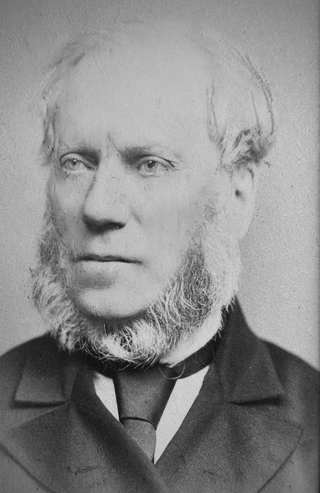
James Dunsmure FRSE FRCSEd was a Scottish surgeon. He served as President of the Royal College of Surgeons of Edinburgh.

John Duncan, LLD FRCSEd FRSE was a Scottish surgeon best known for his surgical teaching at the University of Edinburgh and the Edinburgh Extramural School of Medicine. He was a pioneer of the use of electricity in surgery both for surgical cautery and for tumour necrosis. On the death of his father James Duncan in 1866 he became a director of the major drug manufacturer Duncan Flockhart & Co, which had been founded by his grandfather, also John Duncan. He served as President of the Royal College of Surgeons of Edinburgh 1889 to 1891.

Francis Mitchell Caird FRCSEd was a Scottish surgeon who was an early advocate of Listerian antisepsis and then asepsis. He was a pioneer of gastrointestinal surgery. From 1908 to 1919 he was Regius Professor of Clinical Surgery at the University of Edinburgh and was President of the Royal College of Surgeons of Edinburgh from 1912 to 1914.

The Edinburgh College of Medicine for Women was established by Elsie Inglis and her father John Inglis. Elsie Inglis went on to become a leader in the suffrage movement and found the Scottish Women's Hospital organisation in World War I, but when she jointly founded the college she was still a medical student. Her father, John Inglis, had been a senior civil servant in India, where he had championed the cause of education for women. On his return to Edinburgh he became a supporter of medical education for women and used his influence to help establish the college. The college was founded in 1889 at a time when women were not admitted to university medical schools in the UK.

Edwin BramwellFRSE FRCPE (1873–1952) was a British neurologist. He was President of the Royal College of Physicians of Edinburgh from 1933 to 1935.

John William Struthers FRCSEd was a Scottish surgeon. During World War I he served as a major in the Royal Army Medical Corps and was awarded the Serbian Order of St Sava. During his career in Edinburgh he became an early user of local anaesthetic techniques in general surgery and wrote a highly regarded booklet on the topic. He was elected President of the Royal College of Surgeons of Edinburgh (RCSEd) from 1941 to 1943.
Extramural medical education in Edinburgh began over 200 years before the university medical faculty was founded in 1726 and extramural teaching continued thereafter for a further 200 years. Extramural is academic education which is conducted outside a university. In the early 16th century it was under the auspices of the Incorporation of Surgeons of Edinburgh (RCSEd) and continued after the Faculty of Medicine was established by the University of Edinburgh in 1726. Throughout the late 18th and 19th centuries the demand for extramural medical teaching increased as Edinburgh's reputation as a centre for medical education grew. Instruction was carried out by individual teachers, by groups of teachers and, by the end of the 19th century, by private medical schools in the city. Together these comprised the Edinburgh Extramural School of Medicine. From 1896 many of the schools were incorporated into the Medical School of the Royal Colleges of Edinburgh under the aegis of the RCSEd and the Royal College of Physicians of Edinburgh (RCPE) and based at Surgeons' Hall. Extramural undergraduate medical education in Edinburgh stopped in 1948 with the closure of the Royal Colleges' Medical School following the Goodenough Report which recommended that all undergraduate medical education in the UK should be carried out by universities.